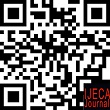Online Submissions
Already have a Username/Password for IJECA (International Journal of Education and Curriculum Application)?
Go to Login
Need a Username/Password?
Go to Registration
Registration and login are required to submit items online and to check the status of current submissions.
Author Guidelines
Paper to be submitted or publications in the IJECA (International Journal of Education and Curriculum Application) consist of several parts:
- Title
- Abstract
- Introduction
- Methods
- Results and Discussion
- Conclusions
- Acknowledgments (if any)
- References.
Number of Pages
Articles are written at least 7 pages, including the Refresh List.
Paper Size
Articles written on A4 paper are 210mm wide (8.27 ") and 297mm long (11.69") with margins: Top: 3 cm, Left: 2.5 cm, Right: 2.5 cm, Bottom: 2.5 cm, and Space 1.15 pt.
Head (Title, Abstract)
- Title was written using a Cambria font with a letter size of 16 pt, a space of 1.0.
- The name of Authors uses the Cambria font with the letter size 10 pt, spacing 1.0. The first author is the main author or correspondence.
- Under the name of the author are written Departments/Study Programs, Universities, and e-mails of each author with a font size of 10 pt with a Cambria font.
- Writing the author may not indicate the name of the position (for example a Supervisor), academic degree (eg Prof, Dr, M.Pd, M.Sc, M.Sc, etc.) or membership of each organization.
- Every affiliate must be included, at least, the name of the institution or company and the name of the country where the author is (for example, the Information Center for Water Resources of DPU NTB, Indonesia)
- The abstract is written in a maximum of 200 words, with Cambria font, 10 pt, 1.0 space. Written in two languages namely Indonesian and English.
- Keywords are mentioned based on research variables.
Tables and Figures
- Tables are written with center or right align with 1.0 space.
- The table title is written using capital letters with a size of 11 pt, while the body of the table is 11 pt.
- It is recommended that the table be referenced in the paragraph before or after in the explanation.
- The title of the image is written in the middle with a font size of 11 pt, a space of 1.0.
- Pictures and Tables are numbered using Arabic numerals
- Figure are displayed with high resolution and placed centered.
- Use solid coloring that contrasts well with high resolution for display on a computer screen, as well as for prints that are black and white.
- Figure (graphs) are allowed to be colored.
Paragraph
- The paragraph must be organized. All paragraphs must be flat, which are both left and right and even.
- Each initial word in the title must be uppercase, except for short words such as, "a", "and", "in", "by", "for", "from", "on", "or", and the like.
- Sequential equations are followed by numbering numbers in parentheses with the right flat margin, as in (1).
- Use the equation editor to make the equation.
- If the equation is long (lots of variables) to be tighter, use the slash (/), the rank function, or the right rank. Use parentheses to avoid confusion in giving fraction numbers.
- Make sure that the symbols in the equation have been defined before the equation or immediately follow after the equation appears. The symbol is typed in italics.
- Each table or image that includes a width of more than 1 column must be positioned at the top or at the bottom of the page.
- The figure may not use dots because there is a possibility that they cannot be printed in the original.
Conclusions and Suggestions
In this section, the author details the conclusions of the results of the discussion and data analysis and is advised to submit further research to the next researcher.
References / Bibliography
- Titles in the Numbered References section, use the APA style
- All reference items are 11 pt font size, 1.0 space.
- The minimum number of references is 25 references, with a minimum of 80% coming from journals/proceedings.
Book
Fausett, L. (1994). Fundamentals of Neural Network. New York: Prentice Hall.
Journal
Herbert, Riza, L. S, and Mukmin, A. (2011). Application of Backpropagation Neural Networks for Rainfall Forecasting. Information and Communication Technology, 2 (1), 1-5.
Syaharuddin. (2015). Pengembangan Modul Praktikum Matlab. Jurnal Teori dan Aplikasi Matematika, 2(1), 12-20
Article / Module / Dictate
Agriculture Sector. (2011). Risk Assessment and Adaptation to Climate Change in Lombok Island, West Nusa Tenggara Province. Mataram: NTB Agriculture Service.
Proceedings / Seminar Articles
Syaharuddin, Vera, M., and Dewi, P. (2017). Development of Matlab Based Computer Programming Modules. Proceedings of Mataram IKIP National Seminar, Mataram, Indonesia, 12-14.
Submission Preparation Checklist
As part of the submission process, authors are required to check off their submission's compliance with all of the following items, and submissions may be returned to authors that do not adhere to these guidelines.
- The submission has not been previously published, nor is it before another journal for consideration (or an explanation has been provided in Comments to the Editor).
- The submission file is in OpenOffice, Microsoft Word, RTF, or WordPerfect document file format. The maximum file size is 2 MB, so that it can be uploaded.
- Where available, URLs for the references have been provided.
- The text is single-spaced; uses a 12-point font; employs italics, rather than underlining (except with URL addresses); and all illustrations, figures, and tables are placed within the text at the appropriate points, rather than at the end.
- The text adheres to the stylistic and bibliographic requirements outlined in the Author Guidelines, which is found in About the Journal.
- If submitting to a peer-reviewed section of the journal, the instructions in Ensuring a Blind Review have been followed.
Copyright Notice
In submitting the manuscript to the journal, the authors certify that:
- Authors are authorized by their co-authors to enter into these arrangements.
- The work described has not been formally published before, except in the form of an abstract or as part of a published lecture, review, thesis, or overlay journal. Please also carefully read Publication Ethics
- That it is not under consideration for publication elsewhere,
- That its publication has been approved by all the author(s) and by the responsible authorities – tacitly or explicitly – of the institutes where the work has been carried out.
- Authors secure the right to reproduce any material that has already been published or copyrighted elsewhere.
- Authors agree to the following copyright agreement.
Authors who publish with IJECA (International Journal of Education and Curriculum Application) agree to the following terms:
- Authors retain copyright and grant the journal right of first publication with the work simultaneously licensed under a Creative Commons Attribution License (CC BY-SA 4.0) that allows others to share the work with an acknowledgment of the work's authorship and initial publication in this journal.
- Authors are able to enter into separate, additional contractual arrangements for the non-exclusive distribution of the journal's published version of the work (e.g., post it to an institutional repository or publish it in a book), with an acknowledgment of its initial publication in this journal.
- Authors are permitted and encouraged to post their work online (e.g., in institutional repositories or on their website) prior to and during the submission process, as it can lead to productive exchanges, as well as earlier and greater citation of published work.

This work is licensed under a
Creative Commons Attribution-ShareAlike 4.0 International License.
Privacy Statement
The names and email addresses entered in this journal site will be used exclusively for the stated purposes of this journal and will not be made available for any other purpose or to any other party.








.jpg)














